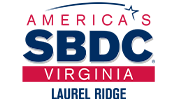A Step-by-Step Guide for Northern Shenandoah Valley Businesses

As a small business owner or solopreneur in the Northern Shenandoah Valley, you know how important it is to stand out in a crowded market. One effective way to do this is by crafting a compelling brand story that resonates with your target audience.
In this post, we’ll walk you through a step-by-step guide on how to create a brand story that sets your business apart and attracts loyal customers.
Step 1: Reflect on Your Business (Winchester, VA Small Business Owners, Take Note!)
Take a moment to think about your business, its history, and your experiences.
Ask yourself questions like:
-
What inspired you to start your business?
-
What problems do you solve for your customers?
-
What sets your business apart from others in Winchester, VA, and the surrounding areas?
Step 2: Identify Your Core Values (Let Your Values Shine in the Northern Shenandoah Valley!)
Write down the values that are most important to you and your business. Consider what drives your decisions and actions. Narrow it down to 3-5 core values that define your business and make you unique in the Northern Shenandoah Valley market.
Some examples of core values include:
-
Customer service
-
Quality products
-
Community involvement
-
Sustainability
-
Innovation
Step 3: Define Your Purpose (Make a Meaningful Impact in Your Community!)
Based on your reflections, identify the purpose behind your business. What impact do you want to make on your customers, community, or industry? Craft a purpose statement that summarizes your why and inspires others to support your mission.
Some examples of purpose statements include:
-
Disney – “To entertain, inform and inspire people around the world through the power of unparalleled storytelling.”
Purpose: Timeless storytelling and family entertainment. -
Coca-Cola – “To refresh the world and make a difference.”
Purpose: Spreading joy and happiness through refreshing beverages. - Patagonia – “We’re in business to save our home planet.”
Purpose: Environmental responsibility and sustainability.
Step 4: Develop Your Unique Value Proposition (UVP) (Stand Out in the Winchester, VA Market!)
Clearly define what sets your business apart from competitors. What unique benefits do you offer to your customers? Craft a concise UVP statement that summarizes your unique value and resonates with your target audience.
Some examples of UVP statements include:
-
McDonald’s – “I’m Lovin’ It”
UVP: Convenient, affordable, and enjoyable food for every occasion. -
Visa – “It’s Everywhere You Want to Be”
UVP: Reliable, secure, and widely accepted payment solutions for your global lifestyle. - American Express – “Don’t Leave Home Without It”
UVP: Secure, flexible, and rewarding payment solutions for your global travels and purchases.
Step 5: Craft Your Brand Narrative (Share Your Story with the World!)
Use your reflections, values, purpose, and UVP to craft a compelling brand story. Share your story in a way that resonates with your target audience. Highlight your struggles, triumphs, and lessons learned, and make sure to showcase your unique personality and voice.
Some examples of familiar brand narratives include:
-
Starbucks – “Third Place Experience”
Starbucks’ narrative focuses on creating a welcoming, inclusive environment that’s neither home nor work. Their brand story has resonated with customers who value community, comfort, and high-quality coffee. -
Disney – “The Happiest Place On Earth”
Disney’s narrative is centered around magic, wonder, and timeless storytelling. Their brand story has become synonymous with family, entertainment, and unforgettable experiences. - Nike – “Just Do It”
Nike’s narrative is built around empowerment, motivation, and pushing boundaries. Their brand story encourages customers to take action, pursue their passions, and overcome obstacles.
Step 6: Define Your Brand Voice and Tone (Be Authentic and Consistent!)
Determine the tone and language that best represents your brand. Consider how you want to come across to your audience. Develop a consistent voice and tone across all communications, from social media to customer interactions.
Some examples of brand voices and tones include:
-
Friendly and approachable
-
Professional and expert
-
Fun and playful
-
Serious and authoritative
Step 7: Visualize Your Brand (Make a Lasting Impression in the Northern Shenandoah Valley!)
Develop a visual identity that reflects your brand story and values. Create a logo, color palette, typography, and imagery that resonates with your audience and makes your brand recognizable in the Northern Shenandoah Valley market.
Some examples of visual identities include:
-
A logo that incorporates your brand’s colors and values
-
A consistent typography and font style
-
Imagery that reflects your brand’s personality and tone
Step 8: Share Your Brand Story (Get the Word Out and Attract Loyal Customers!)
Share your brand story across all platforms, including your website, social media, marketing materials, and customer interactions.
Ensure consistency in your messaging and visual identity, and watch as your brand attracts loyal customers and sets you apart from the competition.
Disney chose the following platforms to get their brand story out to the world.
-
Theme Parks and Resorts: Immersive experiences that bring the brand story to life through attractions, shows, and character interactions.
-
Film and Television: Producing iconic movies, TV shows, and documentaries that showcase their storytelling prowess and beloved characters.
-
Merchandise: Offering a wide range of products, from toys and apparel to home goods and collectibles, that feature Disney characters and themes.
-
Marketing Campaigns: Launching targeted advertising and promotional initiatives that highlight specific aspects of the brand story, such as nostalgia, innovation, or family entertainment.
-
Digital Media: Utilizing social media platforms, online content, and interactive experiences to engage audiences and share the brand story.
-
Partnerships and Collaborations: Partnering with other brands, organizations, and influencers to expand reach and create new storytelling opportunities.
-
Events and Experiences: Hosting events like movie premieres, fan conventions, and live shows that foster a sense of community and celebrate the brand story.
-
Storytelling Platforms: Creating dedicated platforms like Disney+ and ESPN+ to share a wide range of stories, both old and new, with global audiences.
-
Employee Ambassadors: Encouraging and empowering Disney employees to share their own brand story experiences and become ambassadors for the company.
-
Philanthropy and Social Responsibility: Highlighting Disney’s commitment to social causes, environmental sustainability, and community outreach through various initiatives and campaigns.
When you need help with any of these steps, please reach out to our experienced team of Small Business Experts.
We can help you craft a brand story that creates a strong emotional connection with your idea customers, differentiates your business in crowded spaces, and sets you up for long term business success.
We look forward to being part of your small business success!

